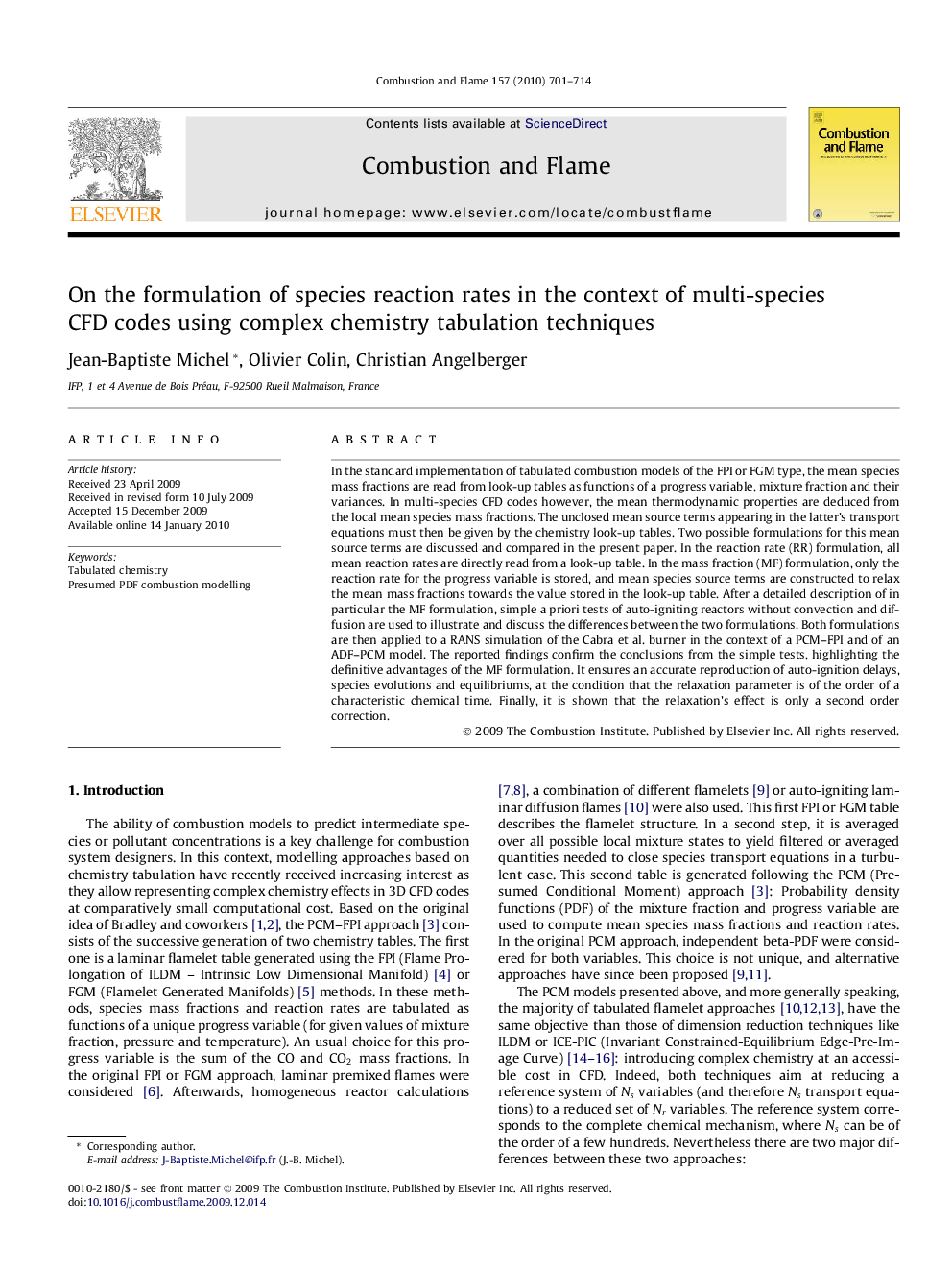| Article ID | Journal | Published Year | Pages | File Type |
|---|---|---|---|---|
| 169982 | Combustion and Flame | 2010 | 14 Pages |
In the standard implementation of tabulated combustion models of the FPI or FGM type, the mean species mass fractions are read from look-up tables as functions of a progress variable, mixture fraction and their variances. In multi-species CFD codes however, the mean thermodynamic properties are deduced from the local mean species mass fractions. The unclosed mean source terms appearing in the latter’s transport equations must then be given by the chemistry look-up tables. Two possible formulations for this mean source terms are discussed and compared in the present paper. In the reaction rate (RR) formulation, all mean reaction rates are directly read from a look-up table. In the mass fraction (MF) formulation, only the reaction rate for the progress variable is stored, and mean species source terms are constructed to relax the mean mass fractions towards the value stored in the look-up table. After a detailed description of in particular the MF formulation, simple a priori tests of auto-igniting reactors without convection and diffusion are used to illustrate and discuss the differences between the two formulations. Both formulations are then applied to a RANS simulation of the Cabra et al. burner in the context of a PCM–FPI and of an ADF–PCM model. The reported findings confirm the conclusions from the simple tests, highlighting the definitive advantages of the MF formulation. It ensures an accurate reproduction of auto-ignition delays, species evolutions and equilibriums, at the condition that the relaxation parameter is of the order of a characteristic chemical time. Finally, it is shown that the relaxation’s effect is only a second order correction.
